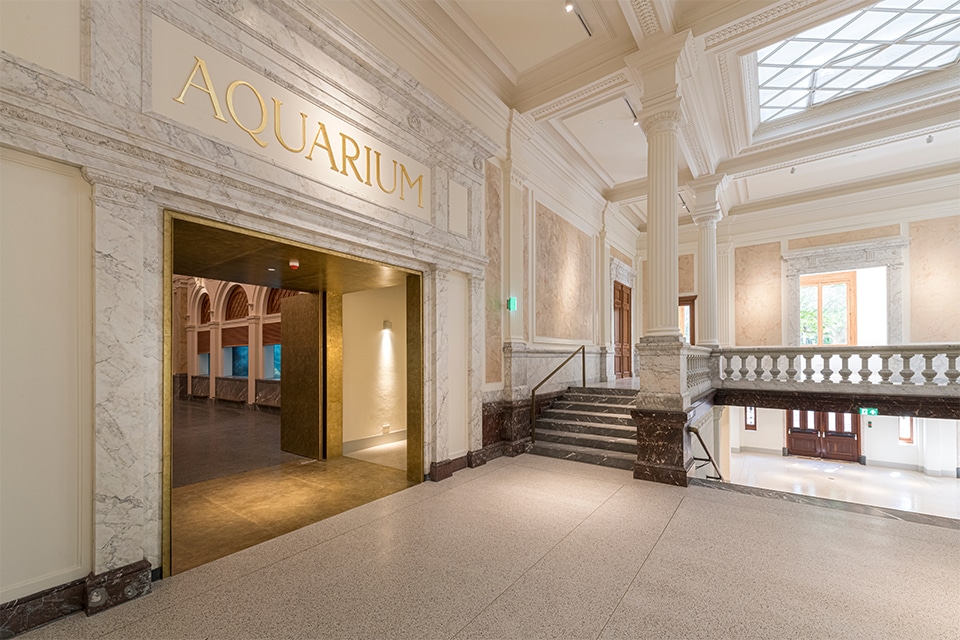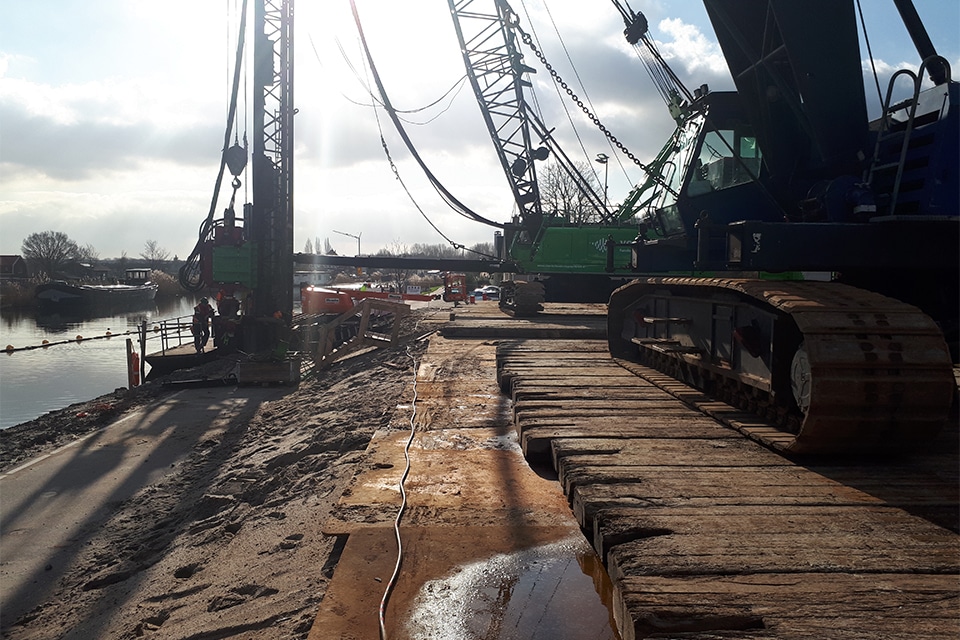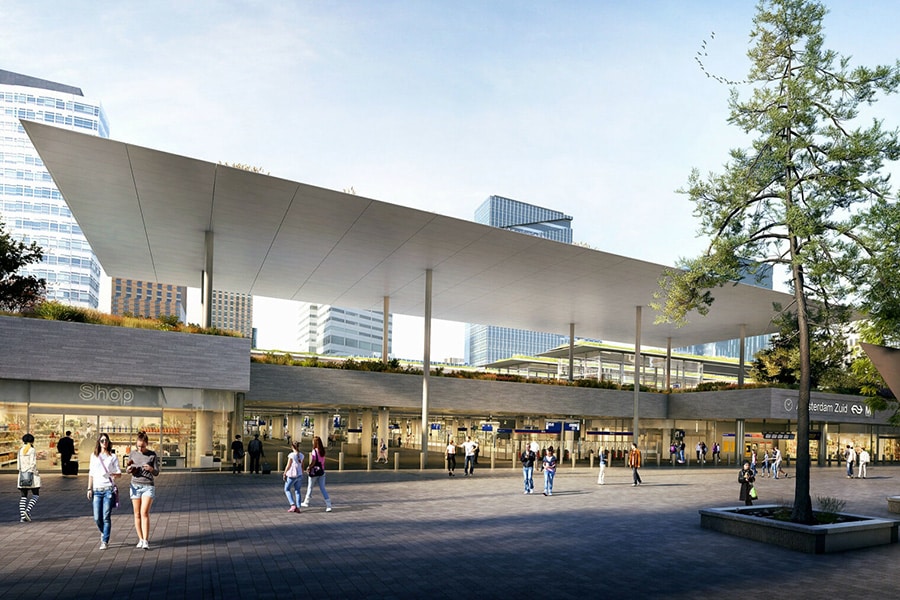
Smart logistics ensure manageable execution planning
With Justus, J.P. van Eesteren is developing and building the first residential tower in the Sluis neighborhood on Amsterdam's Zeeburger Island. There will be 289 new energy-efficient mid-rent homes, including in a hundred-meter-high tower. Completion is scheduled for mid-2024. The construction is logistically sophisticated down to the smallest detail. "All chain partners are cooperating to separate logistics and execution," says project manager Erwin de Waal.
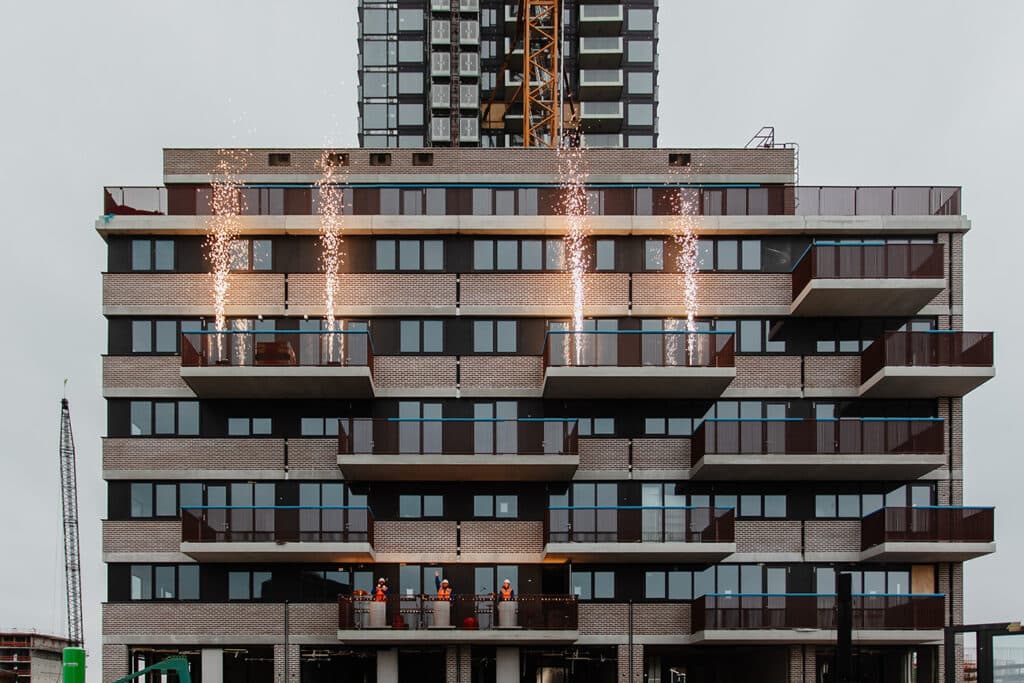
Woontoren Justus was developed in intensive collaboration between J.P. van Eesteren, Gemeente Amsterdam and Achmea Real Estate. This total approach was chosen to make affordable housing possible. The design is by the Architekten Cie. The 2- and 3-room apartments are distributed over a 33-story residential tower and an adjacent low-rise section. On the first floor of the residential tower, about 900 square meters of space is reserved for commercial infill. Under the low-rise will be a small parking garage for 38 cars.
'Green' building
Justus has a robust appearance, including an element façade of aluminum and glass and wide window strips. Much of the surface of the building lot, including the roofs, will be planted, with a roof terrace for residents on the 24th floor. Most of the roofs will be covered with solar panels, and the parking garage will have a retention roof. In addition, the residential tower will be connected to the Sluisbuurt's underground waste transport system. The building will also have a CHP facility. The project reached its highest point in November 2023 and will be delivered turnkey.
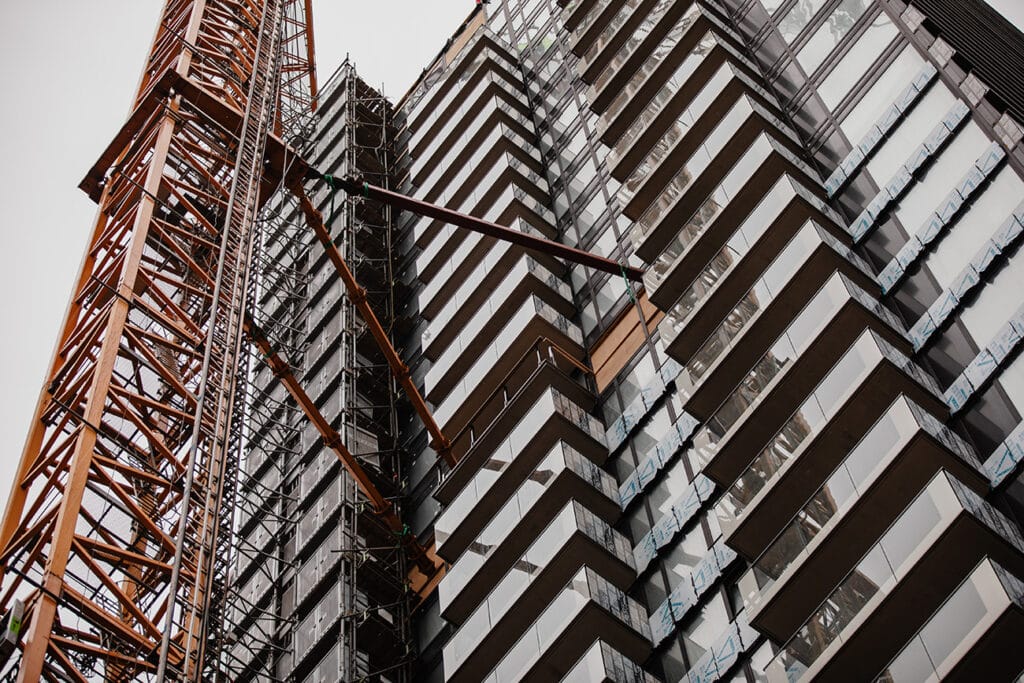
Logistics hub
From the initial structural design, a cost-efficient construction plan was created. Right next to the construction site, J.P. van Eesteren placed a logistics hub to streamline construction logistics. De Waal: "The residential tower is tunnel construction, with façade sealing directly behind it, working from the outside in. The chain partners deliver their materials to the hub minimally packed.
Logistical flows are separated from construction and installation work. That helps keep the construction site tidy. All materials are ready at the site where work is being done that day, and the construction waste from the previous day has already been cleaned up by then."
Prefabricated delivery
Prefab delivery is part of the approach. W-installer Giesbers Installation Group puts the packages together in its own factory. The materials are delivered just-in-time via the hub to the place where mechanics need them. All mechanical parts are delivered plug-and-play as much as possible and/or poured along with the tunnels. "As a result, we make far fewer assembly hours. The wholesaler also cooperates by delivering all parts as much as possible in packages. It just goes to show that construction logistics has increasingly become chain cooperation and that you have to include all parties in it."
Process organizer
As a result, the role of the contractor is also changing. The days when everyone did their own thing on the construction site are over, says De Waal, who has a team of 15 work planners and supervisors at his disposal. "They are busy every day thinking ahead and anticipating. This project approach demands that even more. Think of it as a train whose composition is worked out in advance; then the wagons all have to keep rolling. We do that with clear agreements." For example, the chain partners, including the finishers, must finish a floor in a week. "This is the only way we can carry out this construction method efficiently. It goes without saying that, as a process organizer, we are constantly working on this."
- Client and contractor TBI company J.P. van Eesteren
- Architect the Architekten Cie.
- Construction period December 2021 - mid-2024

